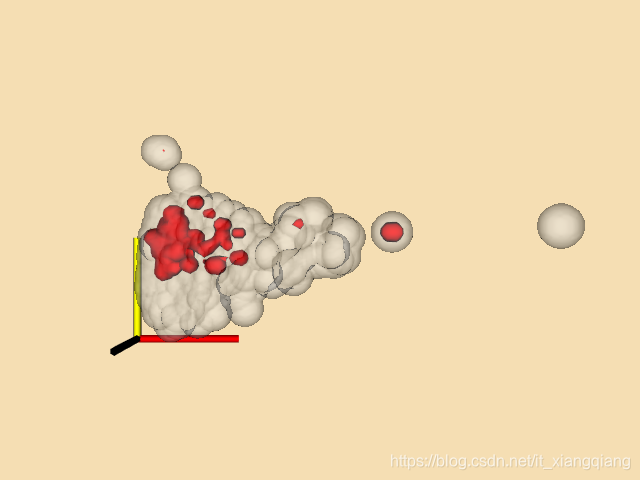VTK:模型之Finance
本文共 295 字,大约阅读时间需要 1 分钟。
VTK:模型之Finance
VTK:模型之Finance

描述
第一步是选择因变量和自变量。这种选择本质上是从多维数据到非结构化点数据集的映射。本示例选择MONTHLY_PAYMENT,INTEREST_RATE和LOAN_AMOUNT作为(x,y,z)点坐标,并选择TIME_LATE作为标量值。这映射了六个变量中的四个。现在,我们将忽略其他两个变量。
该示例使用vtkGaussianSplatter执行splatting操作(即,从非结构化点到体积数据集的转换)。然后进行等值面提取。我们对数据进行了两次喷溅。我们是第一次吐出全部人口。这是为了显示上下文,并在图中显示为灰色/线框。转载地址:http://gonwz.baihongyu.com/
你可能感兴趣的文章
n = 3 , while n , continue
查看>>
n 叉树后序遍历转换为链表问题的深入探讨
查看>>
N!
查看>>
N-Gram的基本原理
查看>>
n1 c语言程序,全国青少年软件编程等级考试C语言经典程序题10道七
查看>>
Nacos Client常用配置
查看>>
nacos config
查看>>
Nacos Config--服务配置
查看>>
Nacos Derby 远程命令执行漏洞(QVD-2024-26473)
查看>>
Nacos 与 Eureka、Zookeeper 和 Consul 等其他注册中心的区别
查看>>
Nacos 单机集群搭建及常用生产环境配置 | Spring Cloud 3
查看>>
Nacos 启动报错[db-load-error]load jdbc.properties error
查看>>
Nacos 报Statement cancelled due to timeout or client request
查看>>
Nacos 注册服务源码分析
查看>>
Nacos 融合 Spring Cloud,成为注册配置中心
查看>>
Nacos-注册中心
查看>>
Nacos-配置中心
查看>>
Nacos2.X 源码分析:为订阅方推送、服务健康检查、集群数据同步、grpc客户端服务端初始化
查看>>
Nacos2.X 配置中心源码分析:客户端如何拉取配置、服务端配置发布客户端监听机制
查看>>
Nacos2.X源码分析:服务注册、服务发现流程
查看>>